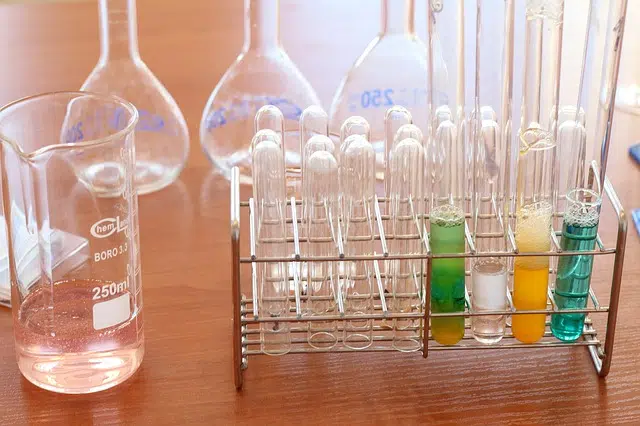
The process that allows the measurement of a volume is known as volumetry.
Volumetrics is the process that allows measuring and determining volumes . Volume , for its part, is the magnitude that indicates the extension of something in height, width and length, having the cubic meter as a unit.
The notion is also used to name the set of these measurements . In this sense, we can speak of the volumetry of a building when the volume of its structure has already been measured.
Volumetry in chemistry
In the specific field of chemistry , volumetry is a process that is carried out to perform a quantitative analysis . In this case, volumetry consists of measuring what volume of a reagent must be spent until a certain reaction is generated in the substance being analyzed.
The development of volumetry, in this case, requires us to know certain concepts. There is a reagent called titrant or titrant , whose concentration is already known and is used to react when in contact with a solution of the analyte (the substance that is of interest to analyze in the sample), which has an unknown concentration.

The concept of volumetry is frequently used in chemistry.
The valuation reaction
The analytical methods used to undertake titration can be of various types, although they all have the particularity that they are based on what is a chemical reaction that responds to the name of titration reaction.
However, there are several types of this type of reaction, among which we can highlight the following:
-The formation of complexes. This, as its name already indicates, is the titration that is undertaken based on the reaction of formation of a complex between the substance called titrant and the analyte.
-The one that responds to the name of precipitation. Its name is what determines that it is a valuation based on what is known as a precipitation reaction. Although it can be of different types, we can establish that the one that is most recognized is argentometry, where both thiocyanate and halogens come into play, passing through the silver ion.
-What is called acid-base. Volumetrics of this type are those that are based on what is the neutralization reaction between what is a solution of acid or base and the corresponding analyte.
-What is known as redox. This fourth valuation is the one based on an oxidation-reduction reaction. When it comes to being able to develop in the most correct way possible, the dissolution of the oxidant as well as the analyte already mentioned come into play.
How to perform volumetry
In an Erlenmeyer flask , below a burette with the standard solution, the exact volume of the reagent to be analyzed and a reduced amount of indicator (the substance that will promote the chemical change) are placed. From a precise control, you can see at what point the indicator changes its color.
This point is the neutralization point of both reactants. By reading the scale used by the buret, one can therefore determine the volume of solution that was added.
